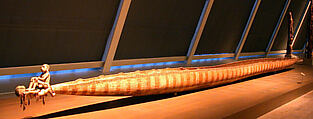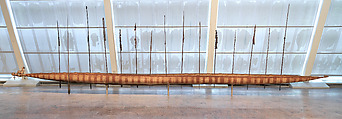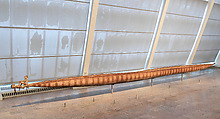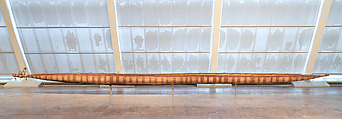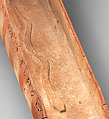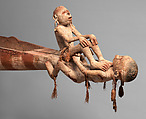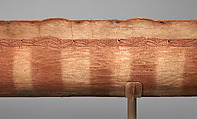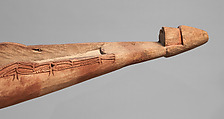Canoe
Not on view
The homeland of the Asmat people of southwest New Guinea consists mainly of densely forested swamps drained by numerous large and small rivers. Canoes are essential to life in the Asmat region, providing the only means of transportation for fishing and food-gathering expeditions, visiting neighboring communities, and, in the past, for embarking on headhunting raids. When paddling the canoes, the paddlers stand erect, skillfully maintaining their balance as they dip the blades in the water. All large Asmat canoes have carved prows, and those of large communal canoes, such as the present one, are especially ornate, adorned with images of ancestors and headhunting symbols. Nearly fifty feet long and capable of carrying twenty people, this canoe was carved by the master woodcarver Chinasapitch of Per village, assisted by other men. The seated figure on the prow depicts his deceased sister Banditis, while the reclining figure represents a young man who had recently been killed by members of an enemy village.
#1710. Canoe
Due to rights restrictions, this image cannot be enlarged, viewed at full screen, or downloaded.
This artwork is meant to be viewed from right to left. Scroll left to view more.
